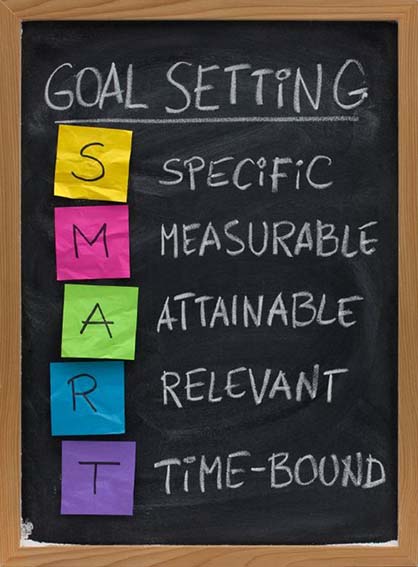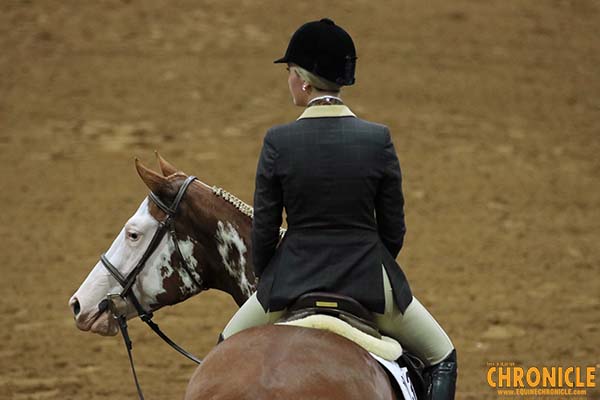Smart Goal Setting For 2020 Show Season
Michigan State University Extension
By: Taylor Fabus
Believe it or not, the beginning of the show season is here, and there is no better time to set goals than right now! Reflect on your progress over the last year. What are you most proud of? What failures did you experience? Keep in mind that failure is often one step towards success. It’s a natural part of the learning process and healthy for competitors of all levels. Tell yourself that you didn’t fail, instead you just learned a new way that doesn’t work! Changing the conversation in your mind to a positive is one way to encourage the learning process. Science has shown us that positive affirmations can improve overall performance; don’t be afraid to be your own biggest cheerleader.
As you begin to form your list of goals, keep in mind the following tips on how setting “SMART” goals can mean the difference between success and failure. This system of goal setting has been described and dissected many times. This article will discuss specifically how you can use this to achieve in your Michigan 4-H Horse & Pony project to achieve success.
The first step is to actually write your goals down. Putting pen to paper (or finger to keyboard) helps you clearly define your goals and commit towards achieving them.
Specific
If you’re writing down your goals (as instructed above), that is the first step toward specificity. A specific goal should answer these five questions:
- What exactly do I want to achieve?
- Why? (Specific reasons, purpose or benefits of accomplishing the goal.)
- Who is involved?
- Where? (Identify a location.)
- Which restrictions or limits are important to consider?
Equine Example:
Poor example: “Have a good Western Riding pattern in next show season.”
Better example: “To improve my confidence in the class, I aim to complete a Western Riding pattern at my spring warm up show in June where I will perform all flying lead changes.”
 Measurable
Measurable
The thought behind this is that if a goal is not measurable, it is not possible to know whether you are making progress towards completing it. Measuring progress can help you stay on track, reach your target dates, and experience the satisfaction when ultimately the goal is reached.
A measurable goal will usually answer questions such as:
- How much?
- How many?
- How will I know when it is accomplished?
- Indicators should be quantifiable
Equine Example:
Poor example: “Buy new show clothes.”
Better example: “Deposit $15 per week into my savings account. At the end of the year, I will have over $700, which is what I need for a very nice used Horsemanship outfit, saddle pad and matching hat.”
Attainable
It is important that your goals are realistic and attainable. While an attainable goal may be difficult to achieve, the goal is not extreme. That is, the goals are neither out of reach nor below standard performance, as these may be considered meaningless. When you identify goals that are most important to you, you begin to figure out ways you can make them come true. You develop the attitudes, abilities and skills to reach them.
An attainable goal will usually answer the question:
- How can the goal get accomplished?
Equine Example:
Poor example: “Compete at Rolex 3-Day Event this year.”
Better example: “Take lessons every other week with my local hunter jumper trainer (insert name here), with the goal of competing in one over fences class this year at fair.”
Relevant
Next, we will discuss choosing goals that matter. A bakery manager’s goal to “make 50 peanut butter and jelly sandwiches by 2 p.m.” may be specific, measurable, attainable and time-bound, but lacks relevance. Relevant goals drive the team (you and your horse), department (your 4-H club) and organization (4-H) forward. A goal that supports other goals would be considered a relevant goal.
A relevant goal can answer yes to these questions:
- Does this seem worthwhile?
- Is this the right time?
- Does this match our other efforts/needs?
Equine Example
Poor example: “Lose weight.”
Better example: “Exercise at least 30 minutes, three times each week. I will use the exercises in “Exercises for the Equestrian: Part 1 and Part 2.” Becoming more physically fit will allow me to ride longer, improving my horsemanship, while also helping my horse becoming more fit!”
Time-bound
Lastly, we’ll discuss the importance of giving goals a time frame. A deadline helps focus your efforts on completion of the goal on or before the due date.
A time-bound goal will usually answer the questions:
- When?
- What can I do six months from now?
- What can I do six weeks from now?
- What can I do today?
Equine Example
Poor example: “Show a lot this year!”
Better example: “Go to at least one horse show per month (within 40 mile radius from my barn) from May-August. Since I saved my entry fees over the winter, I can use that money to pre-enter for each of these shows now.” (Saying per month will help you track your progress along the way, and pre-entering will help you commit while giving you tasks to do now.)
Looking for more inspiration on goal setting? Check out this collection of TED talks on goal setting.
This article was published by Michigan State University Extension. For more information, visit https://extension.msu.edu. To have a digest of information delivered straight to your email inbox, visit https://extension.msu.edu/newsletters. To contact an expert in your area, visit https://extension.msu.edu/experts, or call 888-MSUE4MI (888-678-3464).











